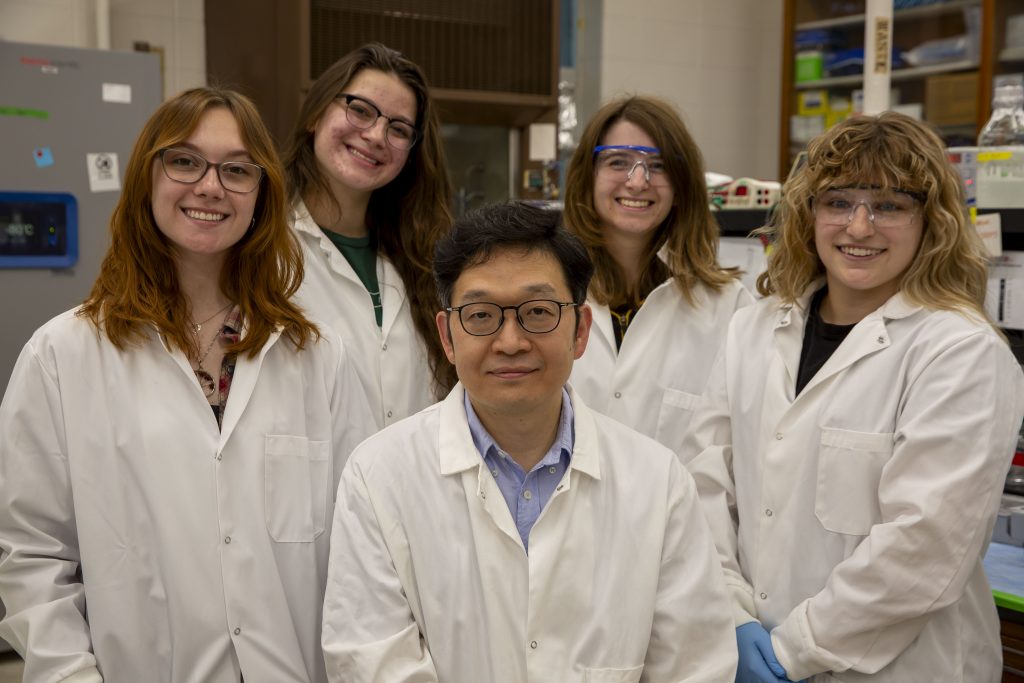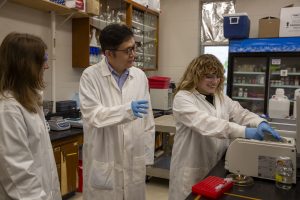
In a groundbreaking step toward understanding — and ultimately — preventing Alzheimer’s disease, CAFNR researchers created a novel genetically engineered pig model that mirrors a key genetic mutation found in humans with early-onset Alzheimer’s. The work, published in the Journal of Alzheimer’s Disease, was led by Kiho Lee, associate professor in the Division of Animal Sciences.
Supported by a series of National Institutes of Health (NIH) grants, the project leverages Mizzou’s National Swine Resource and Research Center and its unique infrastructure. Lee and his collaborators used advanced gene-editing techniques to introduce a known pathogenic mutation linked to familial Alzheimer’s disease — a rare, inherited form that strikes people as early as in their 30s or 40s.

“Most patients don’t come to the clinic until it’s too late,” Lee said. “We wanted to build a model that could help us see what’s happening in the brain before that point — something that could eventually help us intervene early, maybe even prevent it.”
Unlike traditional mouse models, pigs share greater genetic, physiological and anatomical similarities with humans, especially when it comes to brain structure and size. They’re also remarkably smart — smart enough to navigate memory mazes that allow researchers to assess cognitive changes over time.
Already, the new model has revealed early signs of neuroinflammation, a hallmark of Alzheimer’s disease. As the models age, Lee’s team is tracking brain changes using non-invasive imaging techniques in collaboration with researchers at NextGen Precision Health.
The long-term project involves a multidisciplinary team including Randy Prather, Curators’ Distinguished Professor Emeritus; John Driver, associate professor; Wes Warren, professor; and Bhanu Telugu, associate professor. Ph. D. student Kaylynn Monarch, M.S student Emily Kiesewetter, and incoming master’s student Angela McCloskey also play key roles in the day-to-day care, testing and genetic work.

“This research is expensive and labor-intensive,” Lee said. “But thanks to our facilities and NIH support, we’re able to do things few other institutions can — track disease progression, test treatments and study the safety of potential drugs before they reach patients.”
While the team continues to monitor Alzheimer’s-like symptoms as the models age, they’re also planning future studies that will dive deeper into the molecular changes happening in the brain — work that could one day help identify what triggers Alzheimer’s disease in the first place.
“There’s no drug that can reverse the trajectory of Alzheimer’s disease right now,” Lee said. “But this model gives us a tool to start changing that.”